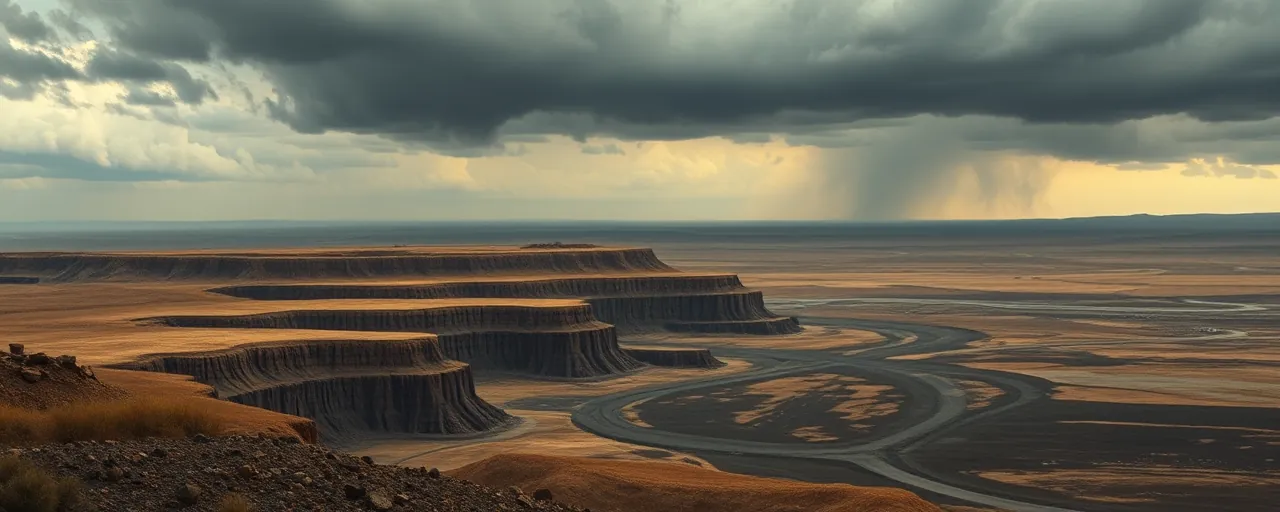A New Chapter for Freedom Mine
In the rolling plains of Mercer County, North Dakota, a dragline excavator churns through layers of earth at Freedom Mine, one of the largest lignite coal operations in the United States. The machine’s steady hum signals more than just daily labor; it’s a sign of a brewing decision that could shape the region’s future. The Bureau of Land Management (BLM) and the Office of Surface Mining Reclamation and Enforcement have put forward proposals to lease additional coal tracts and modify an existing federal mining plan, opening the door to millions of tons of coal beneath public lands.
The stakes are high and the clock is ticking. With a draft environmental assessment now on the table, the agencies are inviting public input through May 2, 2025, on an emergency lease covering 1,350 acres and a mining plan tweak spanning 640 acres. Together, these moves could unlock over 32 million tons of coal, a resource that’s fueled debates about energy security, economic vitality, and environmental cost for decades. A public meeting set for April 24 in Beulah offers locals a chance to weigh in, but the conversation is already rippling far beyond North Dakota’s borders.
Energy Independence Meets Economic Reality
Supporters of the proposals, including BLM Montana/
The economic upside is hard to ignore. Coal mining pumps high-wage jobs into rural communities, with operations like Freedom Mine sustaining hundreds of workers and millions in tax revenue. Take the Spring Creek Mine expansion nearby, which promises 250 jobs averaging $80,000 a year and $5 million in annual taxes. Yet, the flip side looms large: coal’s role in electricity generation has dipped below 50% this year, a historic low driven by wind and solar gains. As renewable energy rises, some question whether leaning on coal locks regions into a fading industry when diversification might offer longer-term stability.
The Environmental Trade-Off
Digging deeper into the earth comes with a steep environmental price. Surface mining, like that at Freedom Mine, scars landscapes, erodes soil, and taints water with pollutants like selenium, which has deformed fish and birds in affected areas. Environmental reviews for similar projects estimate emissions in the tens of millions of tons of CO2, adding fuel to climate concerns. The BLM’s own assessments acknowledge these risks, promising rigorous oversight, but past practices, such as mountaintop removal in Appalachia, have buried over 2,000 miles of streams, slashing biodiversity by half in some regions.
Efforts to soften the blow are underway. Federal rules under the Surface Mining Control and Reclamation Act demand reclamation plans to restore mined land, and innovations like Green Climate Smart Mining aim to cut the ecological footprint. Still, local voices and environmental advocates often push back, pointing to health risks from air pollution and the long shadow of coal’s carbon legacy. The tension between resource extraction and ecological preservation sits at the heart of this debate, with no easy answers in sight.
Voices at the Table
Public sentiment adds another layer to the mix. Polls in Rocky Mountain states show growing support for conservation over energy development on public lands, a shift echoed in community workshops across coal-reliant regions. In North Dakota, the April 24 meeting at Beulah Civic Center will test that balance, giving residents a platform to voice hopes and fears. Past projects, like Spring Creek’s expansion, faced lawsuits that forced tougher environmental scrutiny, proving local input can sway outcomes.
Stakeholder engagement isn’t just a formality; it’s a lifeline for trust. European efforts, like the CoalHeritage EU Project, highlight how involving communities in planning can ease transitions away from coal. Here, the BLM and OSMRE are navigating a tightrope, balancing economic boosters who see coal as a lifeline with residents wary of pollution and health impacts near mining sites. The comment period, open through early May, will reveal where the public lands on this divide.
Looking Back, Moving Forward
Coal’s story in America stretches back to the Industrial Revolution, powering growth and shaping towns like Beulah. The Mineral Leasing Act of 1920 kicked off federal coal leasing, evolving through decades of reforms to balance profit with protection. Today’s proposals at Freedom Mine sit atop a century of boom-and-bust cycles, where mining fueled jobs and infrastructure but often left environmental scars and economic fragility when the coal ran dry. The question now is whether this chapter extends that legacy or pivots toward something new.
The decision carries weight beyond Mercer County. With coal reserves in the Powder River Basin set to last decades under existing leases, and federal permitting streamlined by the Energy Permitting Reform Act of 2024, the path forward blends old priorities with modern pressures. Energy independence remains a rallying cry, but as renewables reshape the grid, the coal industry faces a crossroads. Freedom Mine’s fate could signal whether America doubles down on its past or charts a broader course for its energy future.
